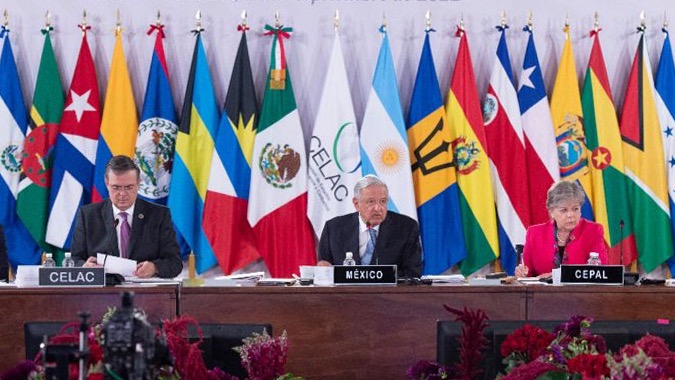Forging Safer Communities: A Comprehensive Guide to Community Policing in the Americas
Public safety in North and South America faces a complex and evolving landscape. Traditional policing methods often fall short, failing to address the root causes of crime and build genuine community well-being. Community policing, however, offers a transformative approach, emphasizing collaboration and proactive problem-solving to create safer and more connected communities. This article details fifteen key strategies for implementing effective community policing initiatives across the Americas, fostering trust and enhancing public safety.
1. Redefining Public Safety: A Collaborative Approach: Community policing moves beyond reactive law enforcement. It prioritizes building strong relationships between law enforcement and the community, fostering a shared responsibility for safety and proactively addressing crime's underlying causes. This collaborative model is essential for long-term success.
2. Building Bridges of Trust: Transparency and Accountability: Trust is the cornerstone of effective community policing. Law enforcement agencies must demonstrate accountability through transparency, actively engaging with residents, listening to their concerns, and responding effectively. Consistent, positive interactions are vital for building and maintaining trust.
3. Embracing Diversity: Cultural Sensitivity in Policing: The rich cultural diversity of the Americas demands culturally sensitive policing practices. Law enforcement agencies must actively understand and respect diverse perspectives, ensuring interactions are inclusive and unbiased. Ongoing cultural competency training is essential for all officers.
4. Strength in Unity: Fostering Collaborative Partnerships: Effective community policing requires strong partnerships. Law enforcement agencies must collaborate with community organizations, local leaders, and residents, leveraging collective strengths and resources to tackle community challenges. This synergistic approach maximizes impact and sustainability.
5. Proactive Problem Solving: Implementing Problem-Oriented Policing: Instead of reacting to incidents, community policing emphasizes proactive problem-solving. This involves identifying the underlying issues contributing to crime and developing targeted solutions to address the root causes, preventing crime before it happens.
6. Empowering Voices: Prioritizing Community Engagement: Active community engagement is paramount. Law enforcement should actively involve residents in decision-making processes, creating platforms for open dialogue and feedback. This participatory approach ensures policing strategies align with community priorities.
7. Investing in Excellence: Training and Professional Development: Equipping officers with the skills to effectively engage diverse communities is crucial. Comprehensive training should encompass cultural sensitivity, de-escalation techniques, conflict resolution, and community engagement strategies. Continuous professional development ensures ongoing effectiveness.
8. Investing in the Future: Empowering Youth Through Engagement: Engaging and empowering youth is a vital long-term investment. Providing positive opportunities, involving youth in decision-making processes, and implementing mentoring programs can significantly reduce crime and foster a sense of ownership.
9. Restorative Justice: Healing and Reconciliation: Restorative justice practices emphasize healing and reconciliation. This approach focuses on repairing the harm caused by crime, involving victims, offenders, and the community in the process. It fosters accountability and promotes solutions beneficial to all involved.
10. Transparency and Open Communication: Fostering Informed Communities: Open communication builds trust. Law enforcement agencies should proactively share information with the community, providing regular updates on crime trends and safety initiatives. This transparency empowers residents and fosters active participation.
11. Addressing Systemic Inequalities: Tackling Root Causes of Crime: Community policing must address underlying systemic issues contributing to crime, such as poverty, inequality, and lack of access to resources. Collaborative initiatives targeting these root causes create a more equitable and safer environment.
12. Leveraging Technology: Enhancing Efficiency and Effectiveness: Technology can significantly enhance community policing. Tools such as predictive policing, crime mapping, community-based mobile applications, and improved communication systems provide valuable insights and facilitate more effective responses.
13. Continuous Improvement: Evaluation and Adaptation: Regular evaluation is essential to maintain effectiveness. Feedback from residents, data analysis, and performance reviews should inform ongoing adjustments and improvements to program design and implementation.
14. Celebrating Success: Reinforcing Positive Change: Acknowledging and celebrating successes reinforces positive change and fosters community pride. Highlighting achievements—reduced crime rates or improved community engagement—strengthens morale and encourages continued collaboration.
15. Lifelong Learning: Staying Informed and Engaged: Continuous education on contemporary community and social development issues in the Americas is crucial for all stakeholders. Staying informed and participating in the dialogue empowers individuals to contribute to safer and more unified communities.
In conclusion, community policing, driven by trust and collaboration, is a powerful tool for enhancing public safety across the Americas. By embracing these strategies, communities can create safer, more inclusive environments for all residents, fostering a stronger sense of unity and shared responsibility for well-being. The future of public safety depends on building strong, resilient communities through proactive partnerships and engagement.


